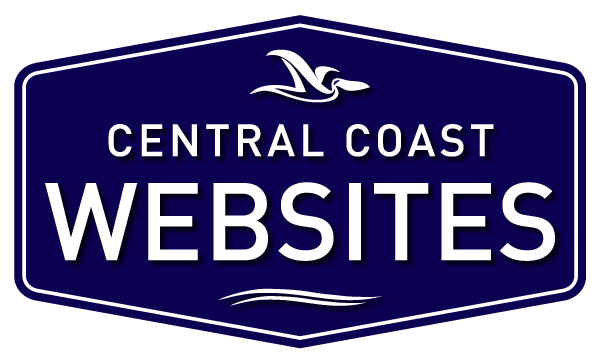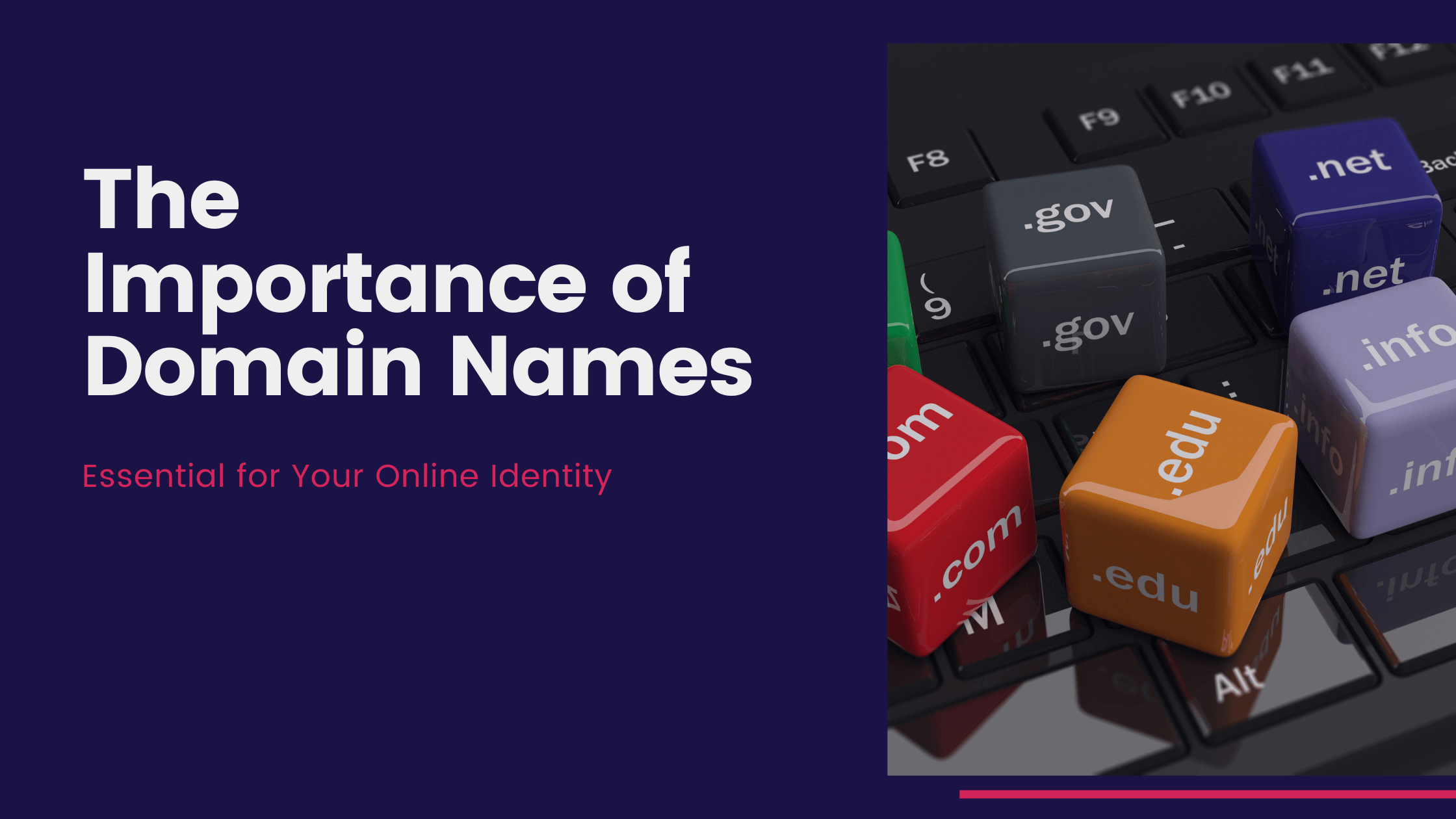Establishing Topical Authority with Quality Content.
In the dynamic world of digital marketing, establishing topical authority stands as a cornerstone for success. This concept transcends the basic notion of being knowledgeable in a particular area. Instead, it’s about becoming the go-to resource, the definitive voice within a specific domain. Topical authority is earned by consistently providing thorough, accurate, and trustworthy information that not only answers the audience’s immediate questions but also anticipates and addresses their deeper, often unspoken needs.
In-depth content is a critical tool in this quest for authority. It goes beyond the surface-level information typical of standard content, offering rich, detailed explorations of topics. Such content doesn’t just scratch the surface; it delves into the heart of subjects, providing insights and perspectives that are both rare and valuable. In digital marketing, this depth of content is not a luxury but a necessity. It’s what separates thought leaders from the rest of the pack, offering audiences not just information, but education, insight, and a reason to remain engaged.
The concept of E-E-A-T (Expertise, Experience, Authoritativeness, and Trustworthiness) is integral to establishing topical authority. This framework, initially developed for assessing the quality of web content, has become a guiding principle in content creation. Expertise reflects the depth of knowledge in a particular field, while experience denotes a proven track record. Authoritativeness is about being recognised by others as a leader in the space, and trustworthiness hinges on the reliability and credibility of the information provided. Together, these elements form the backbone of in-depth content, propelling it to be a powerful force in cementing a brand’s topical authority.
Understanding Your Topic and Audience.
Before looking into the individual components of establishing topical authority, it’s crucial to lay the foundation by thoroughly understanding your topic and audience. This understanding is the foundation upon which all successful in-depth content is built. It’s not just about what you know; it’s about how what you know aligns with what your audience seeks to learn and experience. This foundational step can be broken down into three key areas: identifying your niche and expertise, analysing audience needs and preferences, and tailoring content to match user intent. By mastering these areas, you create a strong alignment between your content and your audience, setting the stage for the development of true topical authority.
Identifying Your Niche and Expertise
The journey to establishing topical authority begins with a clear identification of your niche and expertise. It’s essential to define the specific area where you can offer unparalleled knowledge and insight. This process involves introspection and market analysis to determine where your expertise aligns with a particular market segment or audience interest. The goal is to find a sweet spot where your passion and knowledge meet the needs and interests of your audience.
Analysing Audience Needs and Preferences
Once your niche is identified, the next step is to deeply understand your audience. This involves analysing their needs, preferences, pain points, and questions. Utilising tools like audience surveys, social media listening, and keyword research can provide valuable insights into what your audience is seeking. Understanding these aspects helps in crafting content that resonates with your audience, addressing their concerns and interests in a manner that is both engaging and informative.
Tailoring Content to Match User Intent
The final step in this phase is tailoring your content to match the user intent. It’s not just about covering topics extensively; it’s about aligning your content with what your audience is actively searching for. This involves understanding the different types of user intent – informational, navigational, transactional, and more – and creating content that meets these specific needs. By doing so, you position your content to be not just visible, but valuable – thereby enhancing your topical authority in the eyes of both your audience and search engines.
Creating Pillar and Cluster Pages to Achieve Topical Authority.
In the quest to establish topical authority, the strategic structuring of your content plays a pivotal role. This is where the concept of creating pillar and cluster pages comes into play, offering a systematic approach to organising and presenting your content. This method not only enhances the user experience but also bolsters your site’s visibility and authority in search engines.
The Pillar-Cluster Model Explained
A fundamental strategy in establishing topical authority is the pillar-cluster model, a content framework that organises and links related content for better user experience and search engine visibility. In this model, a pillar page acts as a comprehensive guide on a core topic, while cluster pages delve into related subtopics in more detail. This structure not only helps users navigate your content more effectively but also signals to search engines the breadth and depth of your knowledge in a particular area.
Developing Comprehensive Pillar Pages
Pillar pages are the cornerstone of this model. They provide a broad overview of a topic and serve as a gateway to more specific, detailed content. Creating a pillar page involves aggregating and synthesising essential information about a topic into a single, authoritative source. These pages should be comprehensive, covering all fundamental aspects of the topic, and should be written in an engaging and accessible manner. The goal is to make your pillar page the starting point for anyone looking to understand the topic in its entirety.
Crafting Relevant Cluster Content for Depth
Cluster pages are dedicated to exploring specific aspects of the topic covered in your pillar page. These pages dive deeper into individual subtopics, offering detailed and nuanced perspectives. The key to crafting effective cluster content lies in its relevance and depth. Each cluster page should be closely tied to the main topic of the pillar page but focused enough to provide in-depth information on a specific subtopic. This approach not only enriches the user’s understanding but also strengthens the topical authority of your site as it creates a comprehensive knowledge ecosystem around your core subject matter.
Developing Comprehensive Subtopics.
Developing comprehensive subtopics within your niche is a crucial step for any content strategy aiming to establish authority. This task goes beyond just covering a broad range of topics; it involves a deep dive into the specific, often intricate details that make up your main subject area. The effectiveness of this approach lies in its ability to cover the breadth of your topic while providing depth and insight into each individual aspect.
Identifying Key Subtopics
The first step in this process is identifying key subtopics that are relevant and essential to your main theme. This requires a blend of industry knowledge and audience insight. It’s about understanding not just what aspects of the topic are important, but also what your audience is curious about. Keyword research, competitor analysis, and audience feedback can be invaluable in this phase, helping you to pinpoint the subtopics that will most resonate with your readers.
Once these subtopics are identified, the next step is to dive deep into each aspect. This isn’t just about scratching the surface; it’s about providing a level of detail that positions you as an authority. Each subtopic should be explored thoroughly, with content that is rich in information, insights, and real-world examples. This could involve the latest research, expert opinions, case studies, or in-depth analyses that offer value and depth to your audience.
Lastly, ensuring comprehensive coverage of these subtopics is crucial. This doesn’t mean just covering a lot of topics superficially, but rather ensuring that each subtopic is given the attention and depth it deserves. It’s about creating a content ecosystem where each piece complements the others, offering a holistic view of your niche. By doing so, you not only satisfy the immediate informational needs of your audience but also build a comprehensive resource that cements your position as a topical authority.
Interlinking for Topical Relevance.
Interlinking, a crucial component in enhancing both user experience and SEO, plays a significant role in establishing topical authority. When executed effectively, it not only guides users through your website in a meaningful way but also helps search engines understand the relationship between different pieces of content, thereby boosting your site’s overall topical relevance.
Effective Interlinking for Topical Authority
One of the key strategies for effective interlinking involves creating a logical and intuitive link structure within your content. This means linking to related articles or pages in a way that feels natural and helpful to the reader. For instance, if a particular concept in an article warrants a more in-depth explanation, linking to a dedicated piece on that topic can enhance the reader’s understanding and engagement.
Enhancing User Experience & Navigation
Enhancing user experience and navigation is another vital aspect of interlinking. Your website should be easy to navigate, encouraging users to explore further. Effective interlinking helps achieve this by providing clear pathways through your content, keeping readers engaged and reducing bounce rates. It’s about creating a seamless journey for the user, guiding them from one piece of content to the next in a way that feels both intuitive and rewarding.
Smart Linking to Boost SEO
Lastly, smart linking practices can significantly boost your site’s SEO. This involves using descriptive, keyword-rich anchor texts that give both users and search engines a clear idea of what to expect on the linked page. Additionally, ensuring a balanced approach to interlinking – not overloading a page with links, but providing enough to offer value – is essential. This strategy not only helps in establishing topical relevance but also aids in distributing page authority throughout your site, which can positively impact your search rankings.
Writing Techniques for In-Depth Content.
Writing in-depth content that resonates with your audience requires a careful blend of engagement, information, and accessibility. The way you present your content can make a significant difference in how it’s received and perceived by your readers.
Engaging and Informative Writing Styles
The key to successful in-depth content is to strike a balance between being informative and engaging. Your writing should not only convey expertise but also connect with the reader on a personal level. Use a conversational tone where appropriate, tell stories, and include real-life examples to illustrate your points. This approach helps in breaking down complex ideas into more digestible and relatable content, making your expertise accessible to a wider audience.
Balancing Depth with Accessibility
While it’s important to provide comprehensive coverage of your topics, it’s equally important to ensure that your content is accessible to your audience. Avoid jargon and overly technical language unless your audience is familiar with it. Instead, aim for clarity and simplicity, even when discussing complex subjects. Use headings, bullet points, and short paragraphs to break up text and make it easier to read. Including summaries or key takeaways can also help in distilling the most important information for your readers.
Techniques for Maintaining Reader Interest
Maintaining reader interest throughout long, in-depth pieces is a challenge. To keep your audience engaged, use various techniques like posing questions, offering surprising facts, or introducing compelling narratives. Visual elements like images, infographics, and videos can also enhance engagement, providing a visual break from text and illustrating points more effectively. Additionally, varying sentence length and structure can keep the rhythm of your writing dynamic and interesting. Remember, the goal is to make your in-depth content not only a source of information but also an enjoyable and engaging experience for your readers.
The Role of E-E-A-T in Establishing Topical Authority.
E-E-A-T, standing for Experience, Expertise, Authoritativeness, and Trustworthiness, is a critical concept in building topical authority. This framework is central to creating content that not only ranks well in search engines but also genuinely serves and resonates with your audience.
Emphasising Experience and Expertise in Content
Your content should reflect your experience and expertise in your niche. This involves showcasing your knowledge and skills through well-researched and insightful articles. Share personal experiences, case studies, or unique perspectives that demonstrate your hands-on experience in the field. Highlighting your qualifications or any recognitions you’ve received can also lend credibility to your content.
Building Authority and Trust through Content
Authority and trust are built over time by consistently providing high-quality, reliable content. To establish authority, focus on creating content that is not only informative but also answers common questions and concerns in your field. Ensure that all the information you provide is accurate, up-to-date, and backed by reputable sources. Building trust also involves engaging with your audience, responding to comments, and being open to feedback, which helps in creating a community around your content.
Practical Tips for Improving E-E-A-T
- Reference Authoritative Sources: Cite and link to reputable sources to back up your claims and provide additional value to your readers.
- Update Content Regularly: Keep your content current and relevant by updating it with the latest information and trends in your industry.
- Showcase Credentials: If applicable, display your qualifications, awards, or any other credentials that establish your expertise in your field.
- User Experience Matters: Ensure your website is user-friendly, fast-loading, and secure, as these factors contribute to the trustworthiness of your content.
- Engage with Your Audience: Foster a community by actively engaging with your readers through comments, social media, and other platforms.
- Quality Over Quantity: Focus on producing high-quality content that thoroughly covers your topics instead of churning out a high volume of lower-quality posts.
By integrating these elements of E-E-A-T into your content strategy, you can significantly enhance your topical authority, making your site a trusted and respected resource in your niche.
Incorporating Expert Insights and Data.
To further establish topical authority, it’s essential to incorporate expert insights and data into your content. This not only enriches your content but also adds a layer of credibility and depth that is highly valued by both your audience and search engines.
Leveraging Industry Experts’ Opinions
Including opinions and insights from industry experts can significantly enhance the value of your content. This could be in the form of interviews, guest posts, or expert quotes. Reach out to thought leaders in your field and invite them to share their perspectives on relevant topics. This not only provides your audience with diverse viewpoints but also associates your content with recognised authorities in your industry.
Integrating Data and Research Findings
Data and research findings are powerful tools for substantiating the points made in your content. Incorporate relevant statistics, case studies, or recent research to support your arguments and provide empirical evidence. This approach demonstrates a commitment to accuracy and thoroughness in your content creation process. Ensure that the data sources are credible and the findings are presented in an easily digestible format, such as charts or infographics.
Enhancing Credibility with Evidence-Based Content
Creating evidence-based content is key to enhancing your site’s credibility. This involves not only presenting facts and data but also explaining how they relate to your topic and why they are important for your audience. Reference studies and research appropriately, and provide context to help your readers understand the significance of the data. This approach not only reinforces the validity of your content but also positions you as a trusted source of information in your field.
Using Diverse Content Formats.
Diversifying the formats of your content is essential for reaching and engaging a broader audience in today’s digital landscape. By incorporating a variety of content types, such as videos, infographics, and podcasts, you can cater to different user preferences and learning styles, thus making your content more accessible and appealing.
Exploring Various Content Types (Videos, Infographics, Podcasts)
Each content type offers unique advantages. Videos are excellent for storytelling, bringing concepts to life in a dynamic and visually engaging way. Infographics, on the other hand, are perfect for condensing complex information into easy-to-digest visuals, ideal for quick reading and sharing. Podcasts offer a personal and conversational touch, allowing for deeper discussions and an opportunity to engage with your audience on a more intimate level. Experimenting with these formats can bring fresh perspectives to your topics.
Matching Formats with Content Goals
Selecting the right format should be guided by your content objectives. If the goal is to explain a complex concept, a video might be more effective than a text article. For presenting data or statistics, an infographic can visually represent this information in a clear, engaging manner. It’s about choosing the format that best conveys your message and meets your content goals.
Engaging Different Audience Segments
Different audience segments often have varying content preferences. By offering a range of formats, you can appeal to a wider audience, increasing engagement and reach. This strategy also allows for creative repurposing of content. For example, a blog post can be adapted into a video, or key insights from a podcast can be summarised in an infographic. This not only extends the reach of your content but also reinforces your key messages across various channels.
Utilising diverse content formats is a strategic approach to strengthen your topical authority, enhance engagement, and connect with a wider audience.
SEO Optimisation for Establishing Topical Authority.
SEO optimisation plays a crucial role in establishing and reinforcing your topical authority. It’s not just about ranking high on search engines; it’s about ensuring your content is easily discoverable and relevant to what your audience is searching for. A well-crafted SEO strategy can significantly enhance the visibility and impact of your in-depth content.
Keyword Research and Optimisation
The foundation of effective SEO is thorough keyword research. It involves identifying the terms and phrases your target audience uses when searching for information in your niche. Once identified, these keywords should be strategically integrated into your content. However, it’s important to maintain a natural and reader-friendly approach. Keyword stuffing can be detrimental to user experience and is frowned upon by search engines. The goal is to use keywords in a way that enhances the content’s relevance and readability.
On-Page and Technical SEO for In-Depth Content
On-page SEO involves optimising individual web pages to rank higher and earn more relevant traffic. This includes optimising title tags, meta descriptions, headers, and images. Ensure that your content is structured in a way that search engines can easily crawl and understand. Additionally, technical SEO aspects like website speed, mobile-friendliness, and secure connections (HTTPS) play a significant role in how search engines assess and rank your site.
Building Authority through Backlinks and Off-Page SEO
Off-page SEO, particularly backlinks, is essential for building your site’s authority. Backlinks are links from other websites to your site. They act as endorsements, signalling to search engines that others find your content valuable and trustworthy. Focus on creating high-quality content that naturally attracts backlinks from reputable sites in your industry. Additionally, engaging in ethical link-building strategies, like guest blogging and collaborations, can further enhance your site’s authority and visibility.
Implementing these SEO tactics will not only improve your site’s search engine performance but also reinforce your standing as a topical authority, making your content more accessible and trusted by your target audience.
Updating and Maintaining Content.
In the fast-paced world of digital information, the content on your website cannot remain static if it is to maintain its relevance and authority. Regular updates and maintenance are crucial for keeping your content accurate, engaging, and aligned with the latest industry trends and search engine algorithms.
The Importance of Content Refreshment
Refreshing your content is vital for several reasons. Firstly, it helps in preserving the accuracy and relevancy of your information, especially in industries where developments occur rapidly. Secondly, updated content is often favoured by search engines, which can lead to improved rankings. Lastly, regularly updated content keeps your audience engaged, as it shows commitment to providing current and valuable information.
Strategies for Regular Content Updates
Developing a strategy for content updates is as important as creating new content. This can involve reviewing and updating your existing articles, blog posts, or other resources to reflect the latest information, trends, and data. Implementing a content calendar can help in scheduling regular reviews and updates. Additionally, monitoring industry news and advancements ensures that your content stays at the forefront of your niche.
Keeping Content Relevant and Current
To keep your content relevant and current, pay attention to user feedback and questions. They can provide insights into what aspects of your content might need more clarification or updating. Utilising analytics tools can also help identify which pages are performing well and which ones might benefit from a refresh. Furthermore, updating the visual elements of your content, such as images and videos, can rejuvenate the overall appeal and effectiveness of your information.
Regularly updating and maintaining your content not only enhances its quality and relevance but also reinforces your commitment to providing value to your audience, thereby strengthening your position as a topical authority.
The Important Role of in-depth content for Establishing topical authority.
The journey toward establishing topical authority through in-depth content is both comprehensive and ongoing. It requires a well-rounded approach, starting from a deep understanding of your audience, to the strategic creation of pillar and cluster pages, and the development of detailed subtopics. Diverse content formats play a crucial role in engaging different audience segments, while SEO optimisation ensures that your content is discoverable and ranks well. Incorporating E-E-A-T principles, along with expert insights and data, enhances the credibility and depth of your content. Regular updates and maintenance are essential to keep your content relevant and accurate. This process is a continuous one, necessitating ongoing learning and adaptation in content creation strategies. Embracing this journey is key to becoming a trusted leader in your field and achieving long-term digital marketing success.





